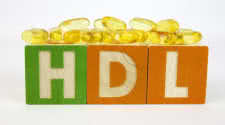How to Raise your HDL

ABC News Medical Unit, July 28, 2006
Scientists tell us that some blood fats are bad while others are good. It's easy to see why people get confused. Here's a basic primer: The body transports fats via blood carriers called lipoproteins, which are classified according to density, composition and size.
They include very low-density lipoproteins (VLDL), the principal triglyceride carrier; low-density lipoproteins (LDL), the principal cholesterol carrier; high-density lipoproteins (HDL), a cholesterol scavenger that gathers free cholesterol and returns it to the liver;
and chylomicrons, formed in the intestinal wall, which carries dietary cholesterol and triglycerides. These major categories are often subdivided into various sub-particles. LDL and VLDL increase the risk of heart disease and stroke, while HDL is protective.
Physicians emphasize lowering cholesterol and triglycerides to promote health, but increasing HDL is equally important. Endurance exercise and alcohol consumption increase HDL A new drug called torcetrapib increases HDL, but it won't be available until at least 2008.
High doses of niacin will also increase HDL by 30 percent. Also, weight loss helps you lower harmful blood fats, which improves the balance between good and bad cholesterols.